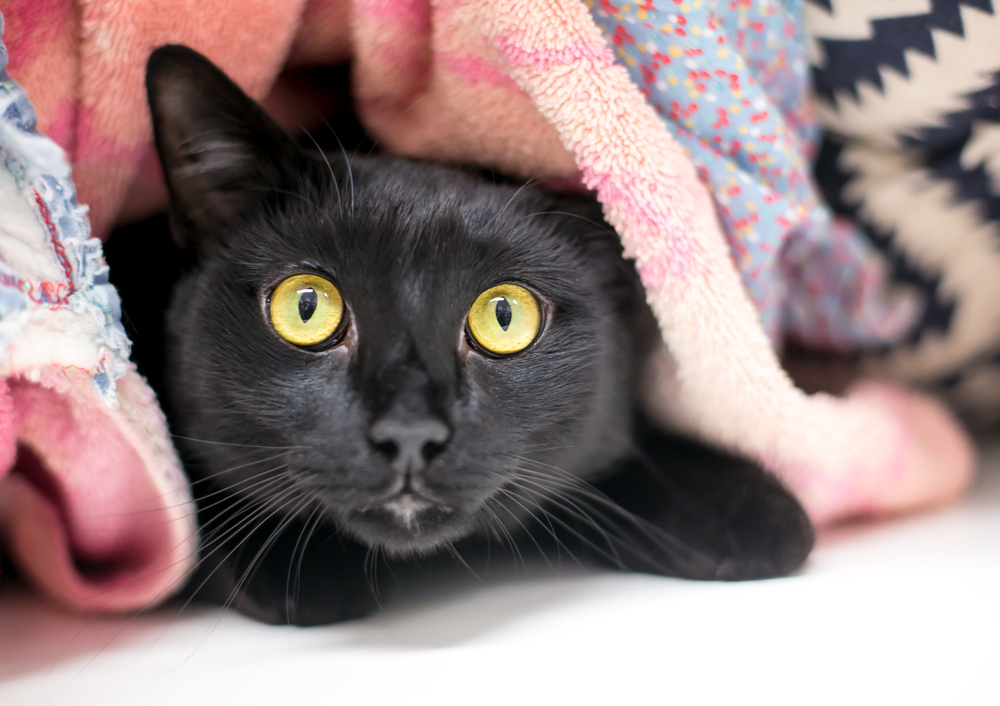
But what we may miss and commonly don’t think about is there are other more subtle things that can make your cat feel stressed out. Your cat’s body can deal with short term scary things by releasing the hormones that cause the fight, flight or freeze response, preparing them to react to whatever they percieve is a threat, but once the fear from that impending threat, goes away, the cats physiological systems return to normal.
What your cat’s body is not designed to handle, is ongoing, persistent stress – an environment or things in your home that commonly scare your cat. Chronic stress can cause behavior problems and illness. For good mental welfare and a happy life for your cat, follow the guideline I’ve talked about in the podcast, encourage the positive core emotions your cats feels, SEEKING and PLAY as much as possible, and reduce the negative ones they feel such as RAGE, FEAR or GRIEF if you can help it. (listen to episode 74)
How to reduce Fear in cats.
Pay attention to the times your acts anxious or fearful. Watch for the body signals and when they skulk or run away. A fearful cat will do anything to get away from scary things. Does your cat disappear anytime a guest comes to the house? If you have multiple cats, does one cat commonly hide under the couch anytime the other one comes into the living room? I know you are providing a warm, comfortable house for your cat to live in, with plenty of love and food but if the dog is constantly chasing him which he does not like, or if a child regularly grabs at and pulls their tail, your cat may feels it’s living in hostile territory and this means it’s environment is a stressful one.
Here is a list of some things that can cause stress in cats.
Repair people in the house or repairs being done.
New furniture being delivered.
Having new flooring or carpeting installed.
A change in food brand. (can be positive if cat was refusing old brand)
A change in the brand or type of litter. (can be positive if the old one was not liked nor used)
Dirty litter box conditions.
Appearance of a strange cat in the yard.
A barking dog next door.
Very loud music or television playing.
Restricted access to regular hiding places.
A lack of safe hiding places.
Changes in your life that cause you stress are also triggers for felines.
Moving to a new home.
Addition of a new cat or dog to the household.
New baby.
New adult or people moving into the home.
Major renovation in the home.
Divorce or break ups.
Death in the family.
Here are some adjustments to make that can help your cat feel less fearful.
Work with your cat so they are comfortable in their cat carrier so car trips are easier.
Provide cozy hiding places for your cat to retreat and nap.
Provide or increase vertical territory to give them more of a sense of control and safety.
Maintain good litter box cleanliness.
Place litter boxes in safe places that do not lead to being ambused by other animals in the home.
Address multiple cat tensions and conflicts as soon as possible, i.e. provide enough separate resources, (food/water dishes, toys, litterboxes), for each cat so competition and guarding does not happen.
Allow your cat to gradually and gently get used to new changes in the house. No forcing them.
Have daily interactive play sessions.
Maintain your cats veterinary care. High stress that leads to emotional and physical issues can be treated by qualified behavior specalists.
When bringing home new pets, use gradual, positive, new-pet introduction techniques.
Source for content: CatWise by Pam Johnson-Bennett.

Anna Dressel and Rocket.




0 Comments